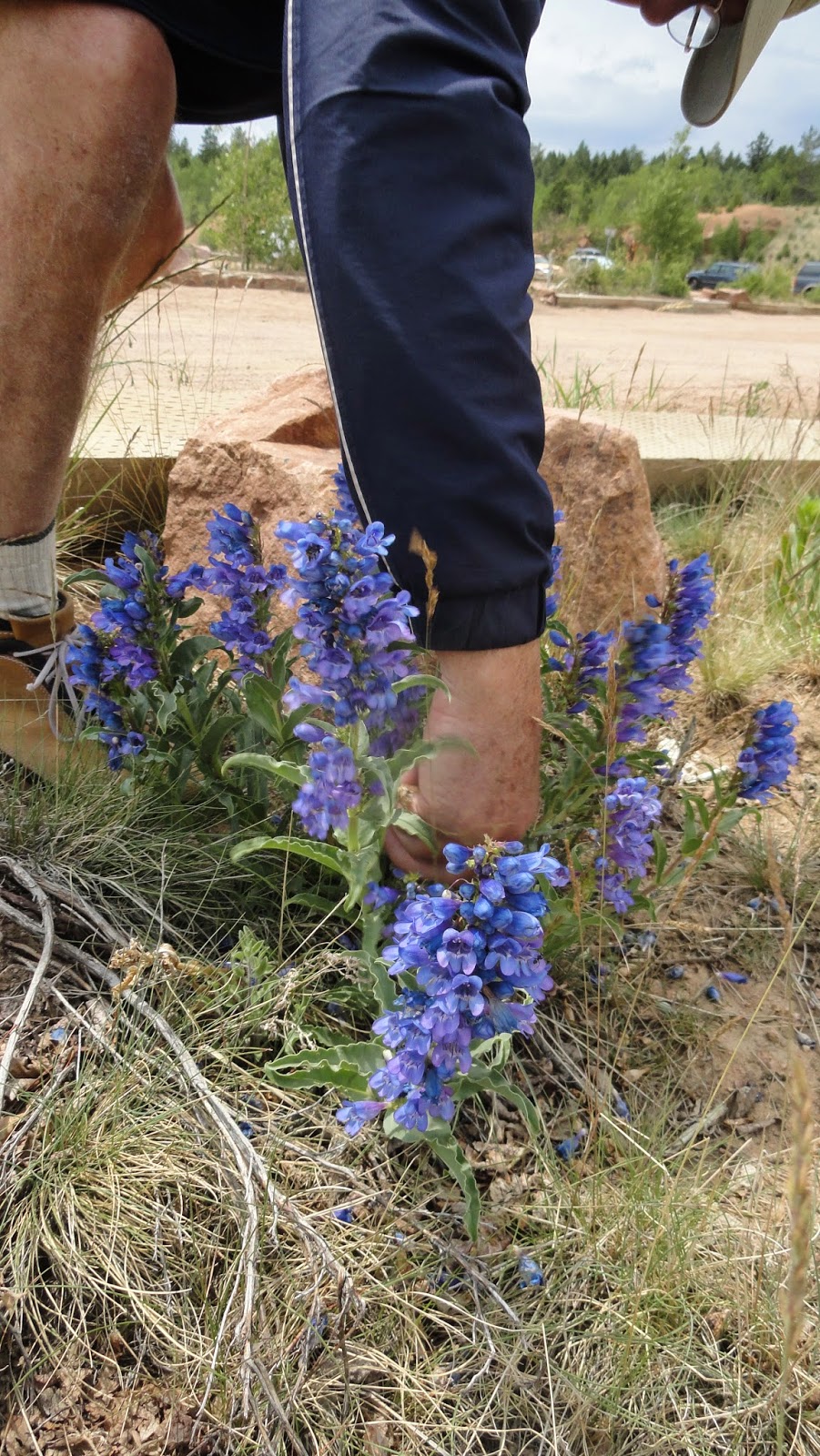 |
| Penstemon brandegei |
Nowadays, if you shop around Denver garden centers, you can come up with a dozen or more species without even trying very hard--many thanks to the Plant Select program*, which has promoted the glorious dark blue Penstemon mensarum (q.v.) from Western Colorado. The violet blue Penstemon strictus 'Bandera' was probably first grown publicly at Denver Botanic Gardens in the early 1980's--but developed by the Los Lunas Plant Center in New Mexico: this has become almost a commonplace in Denver area gardens (it is so vigorous, long lived and showy)--but when I travel around the rest of the country the plant really barely exists in horticulture. Do we really need another bright blue penstemon in our gardens? The answer, friends, is an emphatic yes! The picture above shows Penstemon brandegei in the wild, on Pikes Peak (locus classicus for the taxon--although it's common from there all the way to New Mexico and a bit south. There are breathtaking stands of this on Raton Pass in late June and July most years.
 |
| Same plant, with a hand, for scale |
As you can see, it's a tad stockier than its two other blue cousins that are closely related--and tends to bloom over a month later than mensarum in gardens, and a bit later than strictus as well. If you grow all three in proximity, it is very likely you will end up with some very vigorous intermediates with some new shades of blue--but thus far I have not observed any hybridization in any gardens I've seen these in. The later bloom time, the more robin's egg blue of brandgei, and the fact that I've been seeing it in several local gardens has prompted me to dedicate this posting to it: the West is chockablock full of glorious blue penstemons. But I'm not sure any have quite this fabulous shade of blue, and not many are proving to be so amenable in gardens--as you shall see!
 |
| Looks blurry? click on it and it will magically clear up! |
 |
| Penstemon |
 |
| Closer view (do click on it!) |

I conclude with this impressionistic shot of a sizeable bank of P. brandegei (read last sentence for clarification as to why I persist with the name) growing at the Colorado Springs xeriscape garden, which I talk about in the Blog posting just prior to this (in fact, if you look at that posting, you'll see a picture of this same clump taken from a distance with the wonderful rock garden behind).
So I hope I've convinced you to seek this plant out (good luck--it's not by any means common in cultivation as it should be). And perhaps I've convinced you that it's distinct from other plants in the Habroanthus group like strictus and mensarum--or its closer cousins.from further north. Perhaps some clever nurseryman will take this on and make it available for all of us--come to think of it, I don't have it in my garden either!
* I mention Plant Select above (and have linked to it): a program near and dear to my heart. Plant Select has a x Mexicali type penstemon hybridized by Bruce Meyer using Mexican and probably more Southwestern type penstemon germplasm: one of the cultivars of this cross has been named 'Pikes Peak' although no genes from any of the half dozen or more penstemons that grow on Pikes Peak were used in breeding the x Mexicali grex. Pikes Peak was used as a cultivar name just because it's a well known locale in Colorado.
The Plant Select propagation committee pooh-poohs my suggestion that the program promote Penstemon strictus 'B andera' as well--since that taxon performs so well in gardens--but the mostly Colorado residing group thinks the plant is well known. They don't get around like me, obviously!




I think the biggest problem facing Penstemon in the nursery trade is that so many are short lived. Often they live five years or less. This habit means that Penstemons, like many rock garden plants, are best grown from direct sown seed.
ReplyDeleteI expect nurseries will continue to sell a few. I think most plants sold at nurseries go to novices who end up killing them. If a novice gets five years good years out of a plant then they should be very happy. As long as the plants keep customers happy then nurseries will keep selling them. However, I think the more knowledgable plantsmen/women will always propagate Penstemon from seed.
James